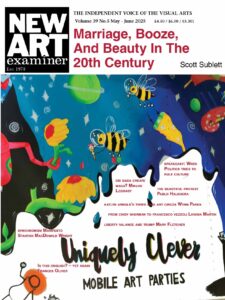
Katherine Anne Porter
Frances Oliver
We can have no idea what masterpiece, if any, will emerge from experiences of the Covid-19 pandemic. We do know that the ‘Spanish’ influenza of 1918 produced at least one classic, Katherine Anne Porter’s short story, Pale Horse, Pale Rider.
The Spanish flu, another species-jumping virus, probably actually originated in America. Unlike with Covid-19, those who did not recover were mostly young; nearly half the dead were aged between 20 and 40. The majority died of secondary infection, bacterial pneumonia, since no antibiotics were available in 1918. Katherine Anne Porter had Spanish flu in its most virulent wave and lived to tell her story. A great many others did not; in a world population of then – only! – approximately 1.8 billion, an estimated 50 million died.
Covid lockdown inspired me to go back to that story, and all of Porter’s others I had or could find. It was well worth the return. Porter had a fascinating background and a varied and exciting life, and drew on her experience and her imagination with consummate skill. Her writing is low-key but vivid, ironic but moving, perfectly crafted. As it had to be; Porter’s whole literary reputation rests on only 30 stories and one novel, which took her 30 years to write. The stories won her both the Pulitzer Prize and the National Book Award.

Katherine Anne Porter was born in Texas in 1890. Her mother died when she was two and she and her siblings were brought up mainly by their grandmother, who regaled her with reminiscences of the – not so long ago – vanished old South. Much of this went into richly colourful family saga stories whose protagonist, young Miranda, doubles for Katherine herself. After her early first marriage ended in divorce, Porter worked as a journalist in Texas and Denver, Colorado; it was then she caught and nearly died of the Spanish flu. Porter went on to live in New York’s Greenwich Village, a centre of radical Bohemia, and also lived in Mexico during its failed revolution and after. Her Mexican stories, pictures of a Mexico tourists do not see, are some of her best.
Porter was also in Europe during the rise of the Nazis, an experience she drew on for her one novel, Ship of Fools. She was back in America during McCarthyism and the Cold War. She had four marriages, none of which lasted long. Besides her more exotic stories are domestic everyday life ones, as finely wrought as the rest. One short but unforgettable piece is just titled He. ‘He’ is a boy who in Porter’s day would have been called simply simple. When he becomes ill and begins to have fits, his ignorant and impoverished parents, though they love him, are compelled to place him in an institution; a story as sad and powerful as Steinbeck’s Of Mice and Men.
When Pale Horse, Pale Rider begins, Katherine’s alter ego Miranda is working as a journalist in the very male-dominated newspaper world of First World War America. The ugly jingoism of the time is beautifully captured when Miranda, already weakened and slightly dazed by her first flu symptoms, is harassed by a couple of Liberty Bond salesmen to buy a 50-dollar war bond though her salary is only 18 dollars a week. Miranda, like the always left-wing Katherine, hates the war, but she fears for her job and does not dare speak out.
Miranda is soon seriously ill. Adam, the new recruit soldier boyfriend she has known only 10 days but loves as he loves her, looks after her devotedly until an ambulance, a doctor and a rare free hospital bed are found. On their last day together, she remembers an old spiritual, Pale horse, pale rider, done take my lover away. They sing the line together but Miranda can’t recall how it goes on. When Adam goes out to get her coffee and ice cream, two hospital interns finally arrive, after frantic demands from her newspaper, to take her to hospital.
Porter writes with wonderful vividness of the dreams, memories and hallucinations, some beautiful and bright, some dark and terrifying, that make Miranda’s world as she drifts in and out of consciousness, until “all notions of the mind, the reasonable inquiries of doubt, all ties of blood and the desires of the heart, dissolved and fell away from her, and there remained of her only a minute fiercely burning particle of being that knew itself alone, that relied upon nothing beyond itself for its strength; not susceptible to any appeal or inducement, being itself composed entirely of one single motive, the stubborn will to live”.
When she comes back to her rational self, a month in hospital has gone by and there are letters waiting for her. Adam never made it to war. He caught Miranda’s illness and died just before the Armistice. Miranda thinks bitterly, “What do you think I came back for, Adam, to be deceived like this?”
Still, the story ends on a hopeful note. The hated war is over, and Miranda is leaving the hospital. “No more war, no more plague, only the dazed silence that follows the ceasing of the heavy guns, noiseless houses with the shades drawn, empty streets, the dead cold light of tomorrow. Now there would be time for everything.”
Volume 35 no. 6 July/August 2021

